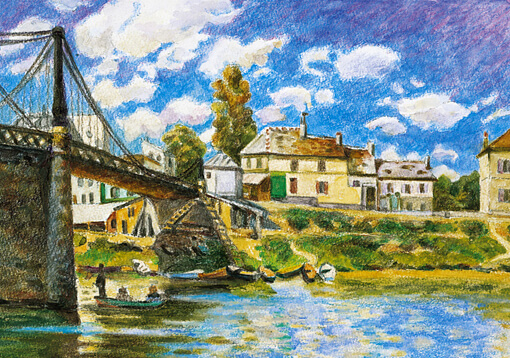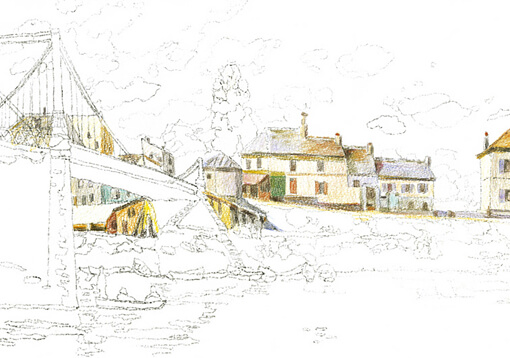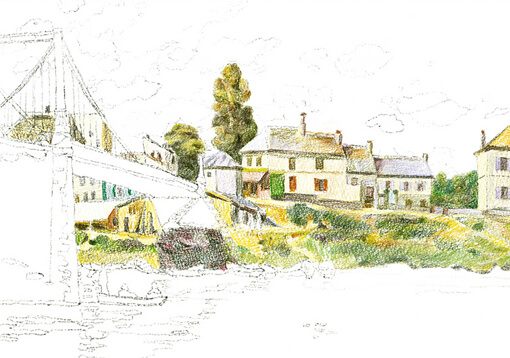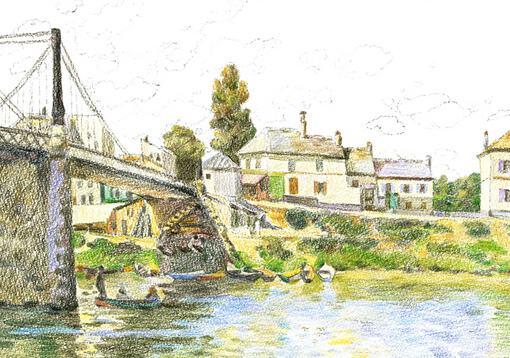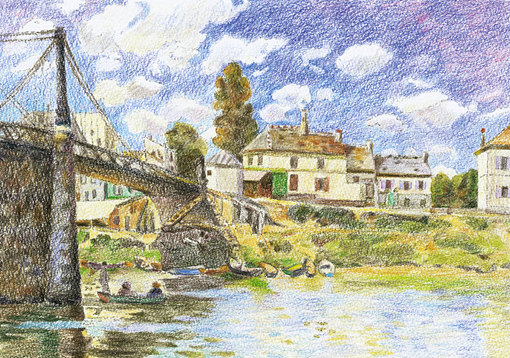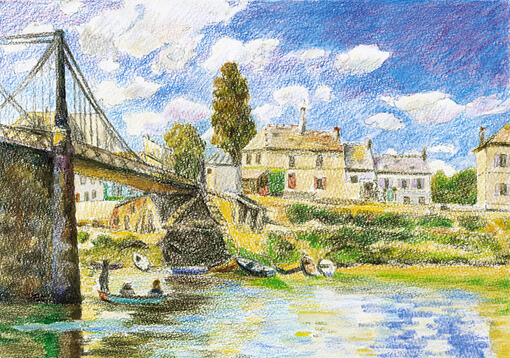Watercolor Pencils Lesson: How to Color
Watercolor pencils: Key features
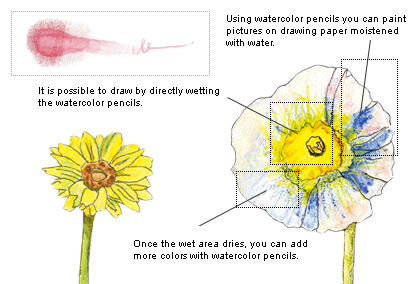
- ◆Water-soluble colored pencils allow you to create similar effects to those found in watercolor paintings.
- ◆Use a wet brush to dissolve colors in the colored sections.
- ◆Using watercolor pencils you can paint pictures on drawing paper moistened with water.
- ◆Once the wet area dries, you can add more colors with watercolor pencils.
- ◆It is possible to draw by directly wetting the watercolor pencils.
- ◆The secret of how to use watercolor pencils is to first complete the entire drawing with pencils and then gently and carefully apply a water wash to create color mixes with beautiful color development.
How to Color “The Bridge at Villeneuve-la-Garenne”
Lesson: How to Color
- COUPY PENCIL
- Colored Pencils
- Watercolor Pencils
- Watercolors
